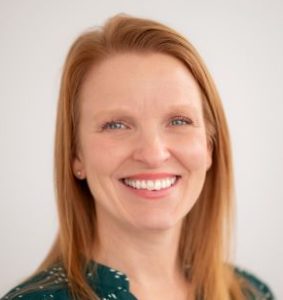
I had some real truth-seeking messages in my personal inbox this week.
Hidden between those phishing ads that make it seem like I was this close to winning a Yeti cooler and my latest Amazon order confirmations, I spied two direct messages from health screening vendors.
Yes, with three kids, we have our fair share of germs around here, but I’m pretty sure that still doesn’t put me in these companies’ target demographic. I’m even more sure that I’m not ready to make that kind of investment in assessing my elementary schooler’s ever-changing symptoms.
But these weren’t sales pitches, it turns out. They were direct appeals for information on the latest nursing home COVID-19 guidance from the Centers for Disease Control and Prevention.
And they were landing in my inbox because I’d written about somewhat controversial masking and screening recommendations for nursing homes last week — in my professional role, on the McKnight’s website that includes both my mcknights.com email address and my Twitter handle.
Now, to be clear, I’m not upset that these gentlemen reached out to me on my non-work email. Both were polite and asked fair questions about decisions/recommendations/rules that could truly impact their businesses.
They were especially curious about an interpretation of CDC’s guidance that found some nursing homes no longer have to use staff or an automated screening tool (ahem) to monitor visitors or incoming, non-symptomatic staff for signs of COVID.
You can see why this might be confusing to vendors who provide healthcare screening, who could be about to lose some key clients. COVID is very much still here, and if everyone’s going to go maskless, shouldn’t providers do more to screen and keep COVID out of their buildings?
But that they reached out to me, a non-clinical specialist who simply shares the best information she can gather from various expert sources, is a real concern. The truth is, I was just easier to find than any plain-language interpretation of the new CDC take that spoke to their needs.
After one follow-up exchange in which I shared my sources and cited CDC language, one of my new email friends wanted to know whom he could reach out to to ask more questions. There has to be some mistake, he insisted.
So who do vendors providing key services get their rule-making interpretations from? How can the nursing home operators they work with know they’re speaking the same language and working under the same (accurate) standards?
There’s no clear answer beyond a nebulous connection to major provider associations, and with guidance this nuanced and different from the last two years, clear answers are very much needed.
I hope my contacts were able to use the truths that I gave them and continue on a path toward understanding. They’ll no doubt be joined by providers, residents and families alike on this still-rocky journey. I hope the CDC hears them coming.
Kimberly Marselas is senior editor of McKnight’s Long-Term Care News.
Opinions expressed in McKnight’s Long-Term Care News are not necessarily those of McKnights.




